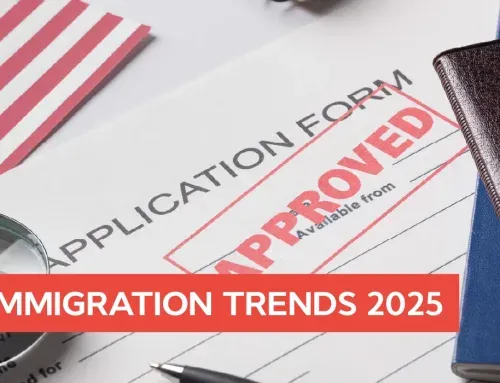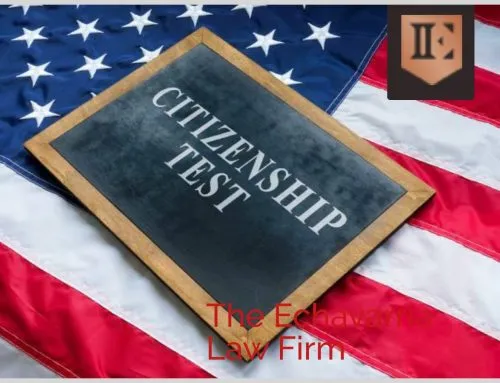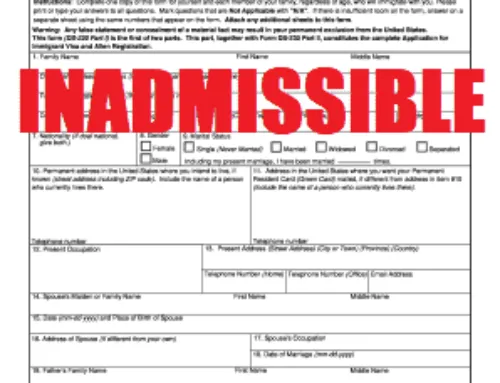H2 Introduction: Finding Safety and Stability Through Humanitarian Relief
The journey to safety and stability in the United States often involves navigating a complex web of immigration laws and procedures. For individuals fleeing persecution, escaping violence, or facing dire circumstances in their home countries, the U.S. offers several forms of humanitarian relief. These pathways are lifelines, providing not just legal status but also a chance to rebuild a life free from fear. Understanding the distinctions between options like asylum, Temporary Protected Status (TPS), U and T Visas, and the Violence Against Women Act (VAWA) is the first critical step toward securing protection.
The Complex Landscape of U.S. Immigration Law
U.S. immigration law is intricate, with different government agencies overseeing various applications. United States Citizenship and Immigration Services (USCIS) typically handles applications filed proactively, while the Executive Office for Immigration Review (EOIR), which includes the Immigration Court system, presides over cases involving individuals in removal (deportation) proceedings. Humanitarian relief exists within this framework, offering protection based on specific vulnerabilities and circumstances rather than traditional family or employment-based petitions.
Who This Guide Is For
This guide is for individuals, families, and their advocates seeking to understand the primary forms of humanitarian protection available in the United States. Whether you are fleeing danger, are a victim of a crime, or your home country is in crisis, this article will break down the key requirements, processes, and strategic considerations for each pathway, providing a clear map to navigate your options.
Understanding Asylum: A Fundamental Pathway to Protection
Asylum is a cornerstone of U.S. humanitarian relief, designed to protect those who have fled their home country due to persecution or a well-founded fear of it. It offers a permanent solution for individuals who cannot safely return home.
What is Asylum?
Asylum is a form of protection granted to foreign nationals already in the United States or at a port of entry who meet the international definition of a “refugee.” To qualify, an applicant must prove they have suffered persecution or have a well-founded fear of future persecution on account of one of five protected grounds: race, religion, nationality, membership in a particular social group, or political opinion.
Affirmative Asylum: Proactively Seeking Safety
The affirmative asylum process is for individuals who are not in removal proceedings. An asylum application (Form I-589) must be filed with USCIS within one year of arriving in the United States, though some exceptions apply. The applicant attends a non-adversarial interview with a USCIS Asylum Officer who determines their eligibility. If approved, the individual is granted asylee status. If denied, their case is typically referred to an Immigration Court, transitioning the process to defensive asylum.
Defensive Asylum: Protection in Removal Proceedings
Defensive asylum is a defense against deportation. An individual applies for asylum defensively when they are in removal proceedings before an Immigration Judge in Immigration Court. This situation can arise if someone is apprehended by immigration authorities within the U.S. or if their affirmative asylum application was denied by USCIS. The process is adversarial, with a government attorney arguing against the asylum claim. The Immigration Judge makes the final decision, which can be appealed to the Board of Immigration Appeals (BIA).
Affirmative vs. Defensive Asylum: A Strategic Breakdown
The key difference lies in the setting and posture. Affirmative asylum is a proactive request for protection filed with an administrative agency (USCIS). The tone is investigatory. Defensive asylum is a reactive defense used in a formal court setting to prevent removal. It is crucial to file affirmatively within the one-year deadline to preserve this less adversarial option. Waiting until being placed in removal proceedings limits strategic choices and raises the stakes significantly.
Temporary Protected Status (TPS): A Temporary Haven
While asylum offers a permanent path, Temporary Protected Status provides a temporary but vital safe harbor for individuals from countries facing extraordinary and temporary crises.
What is Temporary Protected Status?
TPS is a temporary immigration status granted to eligible nationals of specific countries designated by the Secretary of Homeland Security. A country may be designated due to ongoing armed conflict, environmental disasters like earthquakes or hurricanes, or other extraordinary and temporary conditions that prevent its nationals from returning safely. TPS is not a permanent solution, but it provides immediate protection from deportation and eligibility for work authorization.
Eligibility, Benefits, and Re-registration
To be eligible, an individual must be a national of a TPS-designated country, have been continuously physically present in the United States since the effective date of their country’s designation, and meet certain admissibility criteria. Beneficiaries must re-register during designated periods to maintain their status. TPS does not independently lead to a green card, but a TPS holder may be eligible for other forms of relief, such as family-based petitions or asylum, which can lead to Adjustment of Status.
U Visas: Supporting Victims of Crime
The U nonimmigrant status, or U Visa, is a critical tool for both law enforcement and immigrant victims of serious crimes. It encourages cooperation with authorities while offering a path to stability for those who have suffered abuse.
Purpose of the U Visa (U Nonimmigrant Status)
The U Visa was created to protect victims of certain qualifying crimes who have suffered substantial mental or physical abuse and are willing to assist law enforcement or government officials in the investigation or prosecution of the criminal activity. By providing a potential immigration benefit, it helps build trust between immigrant communities and law enforcement agencies, strengthening their ability to investigate and prosecute crimes like domestic violence, felonious assault, and human trafficking.
Eligibility Criteria
An applicant must meet four primary criteria:
- They have suffered substantial physical or mental abuse as a result of being a victim of a qualifying criminal activity.
- They possess information concerning that criminal activity.
- They have been, are being, or are likely to be helpful to law enforcement in the investigation or prosecution.
- The criminal activity violated U.S. laws.
A key component is obtaining a certification from a qualifying law enforcement agency confirming the victim’s helpfulness.
The Application Process and Benefits
The U Visa application is filed with USCIS. Due to a statutory annual cap of 10,000 visas, backlogs are significant. However, USCIS may grant “bona fide determination” status, providing work authorization while applicants wait for a final decision. Approved U Visa holders can remain in the U.S. for up to four years and, after three years, may be eligible to apply for a green card through Adjustment of Status.
T Visas: A Lifeline for Victims of Human Trafficking
Similar to the U Visa, the T nonimmigrant status (T Visa) focuses on a specific, heinous crime: human trafficking. It offers protection to victims and aids authorities in dismantling trafficking networks.
Purpose of the T Visa (T Nonimmigrant Status)
The T Visa provides immigration protection to victims of a severe form of human trafficking. It allows victims to remain in the United States to assist in the investigation and prosecution of traffickers. To be eligible, an individual must demonstrate they are a victim of trafficking (either sex or labor), are physically present in the U.S. due to that trafficking, and have complied with any reasonable request for assistance from law enforcement. An exception to the cooperation requirement exists for those under 18 or who would suffer extreme trauma. Like the U Visa, the T Visa provides a path to Adjustment of Status.
VAWA Self-Petition: Empowerment for Survivors of Domestic Violence
The Violence Against Women Act (VAWA) contains powerful immigration provisions that allow certain abused family members of U.S. citizens and Lawful Permanent Residents (LPRs) to seek safety and independence from their abusers.
What is VAWA?
VAWA allows an abused spouse, child, or parent of a U.S. citizen or LPR to file a self-petition for an immigrant visa without the abuser’s knowledge, consent, or participation. This “self-petitioning” process is a critical safeguard, as it removes the abuser’s ability to use the immigration petitioning process as a tool for control and abuse. It addresses situations of domestic violence directly within the family immigration context.
Eligibility Requirements
An eligible self-petitioner must prove:
- The qualifying relationship to the U.S. citizen or LPR abuser (e.g., spouse, child, parent).
- They resided with the abuser.
- They suffered battery or extreme cruelty during the relationship.
- The relationship was entered into in good faith (for marriages).
- They are a person of good moral character.
The VAWA Application Process and Benefits
The VAWA self-petition (Form I-360) is filed confidentially with USCIS. If approved, the applicant receives a deferred action status and can apply for work authorization. For immediate relatives of U.S. citizens, they can often concurrently file for Adjustment of Status. Others are given a priority date and can adjust their status once a visa becomes available.
Navigating the Application Process: Practical Guidance for All Humanitarian Relief
Regardless of the specific path, all humanitarian relief applications require meticulous preparation and a clear understanding of the process.
Essential Documentation and Evidence
Strong evidence is the foundation of any successful application. This includes identity documents, detailed personal declarations or affidavits describing the persecution or abuse, police reports, court records, medical records, country conditions reports (for asylum), and any other corroborating evidence that supports the claim.
Understanding Forms and Fees
Each form of relief has a specific application form (e.g., I-589 for asylum, I-918 for U Visa, I-360 for VAWA). While many humanitarian applications have fee waivers available, it is crucial to check the most current USCIS instructions for both the correct forms and any associated fees to avoid rejection.
Common Pitfalls and How to Avoid Them
Common mistakes include missing deadlines (like the one-year asylum filing deadline), providing inconsistent information across documents, submitting insufficient evidence, and failing to update USCIS with a new address. Thoroughly reviewing all paperwork and seeking experienced legal guidance can help avoid these errors.
Timelines and Expectations
Processing times for humanitarian cases can be extremely long, often spanning several years. Applicants should prepare for a lengthy wait. It is important to monitor case status online and respond promptly to any requests for evidence or information from USCIS or the Immigration Court.
Rights and Protections During the Process
Applicants have the right to be represented by an attorney, the right to an interpreter if needed, and the right to present evidence on their own behalf. For victim-based petitions like VAWA, U Visa, and T Visa, strict confidentiality provisions are in place to protect the applicant’s safety.
When Paths Converge: Understanding Overlapping Relief & Long-Term Stability
An individual’s circumstances may make them eligible for more than one form of humanitarian relief, creating strategic choices that can significantly impact their future.
Considering Multiple Avenues for Relief
A person from a TPS-designated country who also fears returning due to political persecution may be eligible for both TPS and asylum. An individual who suffered domestic violence that also led to a police investigation could potentially qualify for both a VAWA self-petition and a U Visa. Understanding the benefits of each—such as the temporary nature of TPS versus the permanence of asylum, or the different processing times and pathways to a green card for VAWA and U Visas—is essential for making an informed decision with the help of legal counsel. These pathways are not always mutually exclusive and can offer layered protection on the long road toward Adjustment of Status and permanent stability in the United States.


